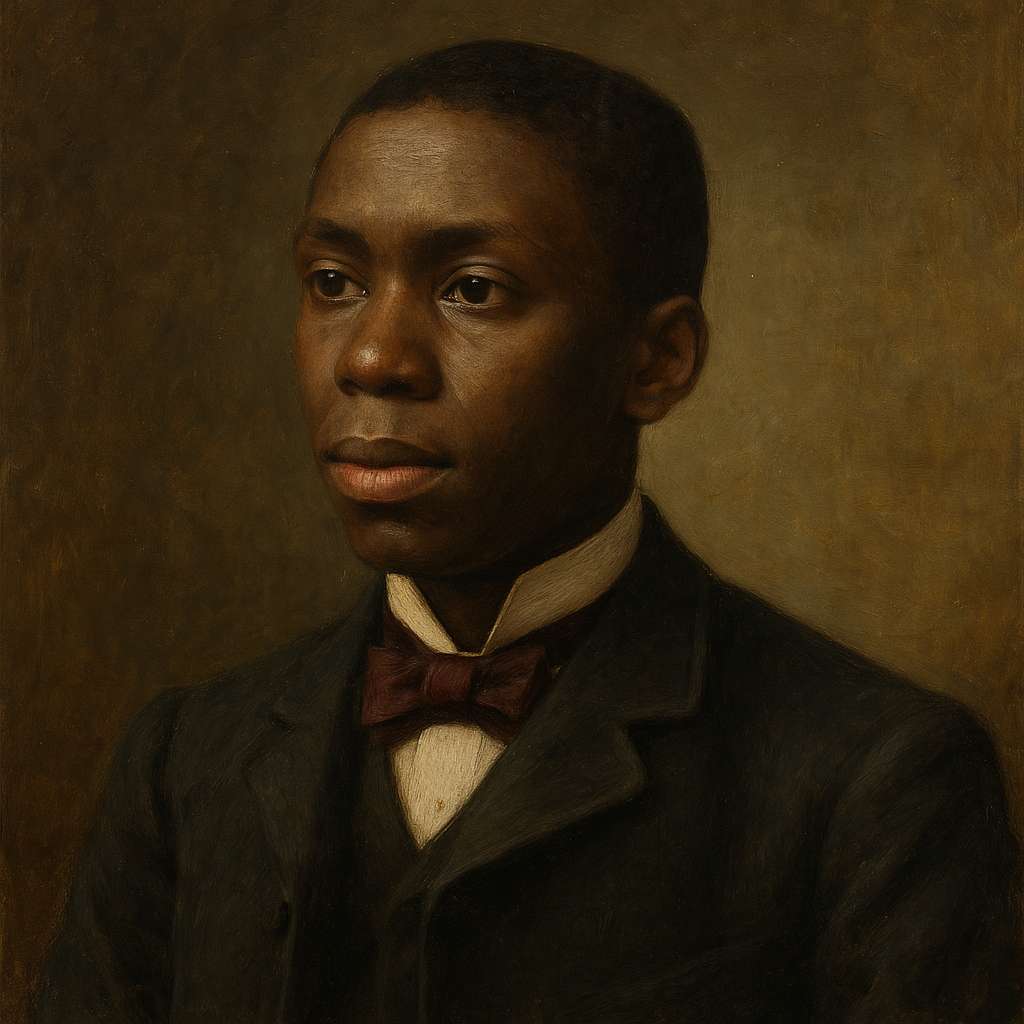Common Things
Paul Laurence Dunbar
1872 to 1906

I like to hear of wealth and gold,
And El Doradoes in their glory;
I like for silks and satins bold
To sweep and rustle through a story.
The nightingale is sweet of song;
The rare exotic smells divinely;
And knightly men who stride along,
The role heroic carry finely.
But then, upon the other hand,
Our minds have got a way of running
To things that aren't quite so grand,
Which, maybe, we are best in shunning.
For some of us still like to see
The poor man in his dwelling narrow,
The hollyhock, the bumblebee,
The meadow lark, and chirping sparrow.
We like the man who soars and sings
With high and lofty inspiration;
But he who sings of common things
Shall always share our admiration.
Paul Laurence Dunbar's Common Things
Introduction
Paul Laurence Dunbar's poem "Common Things" presents a nuanced exploration of the tension between grandiosity and simplicity, between the extraordinary and the ordinary. This work, characteristic of Dunbar's oeuvre, invites readers to reconsider their values and perceptions of beauty, worth, and meaning in both literature and life. Through a careful analysis of the poem's structure, language, and thematic elements, we can uncover the depth of Dunbar's commentary on the human condition and the often overlooked significance of the quotidian.
Structure and Form
The poem consists of five quatrains, each following an ABAB rhyme scheme. This regular structure provides a sense of order and predictability, mirroring the reliable nature of the "common things" Dunbar celebrates. The use of iambic tetrameter throughout the poem creates a rhythmic cadence that echoes the steady, unassuming beat of everyday life. This choice of meter is particularly apt, as it avoids the more grandiose iambic pentameter often associated with elevated poetic subjects, thus reinforcing the poem's thematic focus on the ordinary.
Thematic Duality
Dunbar masterfully constructs a duality within the poem, juxtaposing the allure of the extraordinary with the charm of the commonplace. The first two stanzas present a catalogue of grand and exotic elements: "wealth and gold," "El Doradoes," "silks and satins," "nightingale," "rare exotic," and "knightly men." These images evoke a sense of luxury, adventure, and romantic idealism often celebrated in literature and popular culture.
However, the third stanza marks a pivotal shift, introducing the contrasting perspective with the phrase "But then, upon the other hand." This transition signals the poem's core argument: while the magnificent may captivate us, our minds have "a way of running / To things that aren't quite so grand." Dunbar suggests that this inclination towards the ordinary is not merely a failing of imagination but perhaps a fundamental aspect of human nature.
The Aesthetics of the Ordinary
In the fourth and fifth stanzas, Dunbar presents a countervailing set of images: "The poor man in his dwelling narrow, / The hollyhock, the bumblebee, / The meadow lark, and chirping sparrow." These elements, drawn from nature and humble human existence, are portrayed with a tenderness that elevates them to a status equal to, if not surpassing, the grand images of the earlier stanzas.
The poet's choice of imagery is particularly significant. The hollyhock, a common garden flower, stands in stark contrast to the "rare exotic" mentioned earlier. The bumblebee and sparrow, often considered unremarkable creatures, are given prominence alongside the more poetically traditional nightingale. This careful selection of imagery underscores Dunbar's argument for the beauty and value inherent in the everyday world.
Social Commentary
Beyond its aesthetic considerations, "Common Things" can be read as a subtle critique of social hierarchies and literary elitism. By giving equal weight to "The poor man in his dwelling narrow" and the "knightly men who stride along," Dunbar challenges the reader to reconsider societal values that prioritize wealth, status, and grandeur over the dignity of common existence.
This social commentary is particularly poignant coming from Dunbar, an African American poet writing in the late 19th and early 20th centuries. His celebration of the common and the ordinary can be interpreted as a validation of marginalized experiences and a challenge to the dominant cultural narratives of his time.
The Role of the Poet
The final stanza introduces a meta-poetic element, reflecting on the role of the poet and the nature of poetic inspiration. Dunbar acknowledges the value of the poet "who soars and sings / With high and lofty inspiration," but ultimately affirms that "he who sings of common things / Shall always share our admiration." This statement serves not only as a justification for the poem's subject matter but also as a broader artistic manifesto.
By asserting the enduring appeal of poetry that engages with the commonplace, Dunbar aligns himself with a tradition that includes poets like William Wordsworth, who famously sought to capture "the real language of men" and find poetry in ordinary subjects. This stance represents a democratic approach to art, suggesting that true poetic insight lies not in grand abstractions but in the ability to illuminate the significance of everyday experiences.
Language and Tone
The language of the poem is deliberately accessible, avoiding ornate diction in favor of clear, straightforward expression. This stylistic choice reinforces the poem's thematic focus on the common and the ordinary. However, Dunbar's craftsmanship is evident in his ability to imbue simple language with deep emotional resonance.
The tone of the poem evolves subtly from stanza to stanza. The opening lines convey a sense of admiration for the grand and exotic, with phrases like "I like to hear" and "I like for" expressing genuine appreciation. However, as the poem progresses, there's a shift towards a more intimate and affectionate tone, particularly in the phrases "We like" and "shall always share our admiration." This progression from "I" to "We" also suggests a movement from individual preference to a shared, communal value system.
Conclusion
"Common Things" stands as a testament to Paul Laurence Dunbar's poetic skill and philosophical depth. Through its careful balance of form and content, the poem offers a profound meditation on the nature of beauty, value, and poetic subject matter. Dunbar challenges his readers to look beyond the superficially impressive to find meaning and beauty in the fabric of everyday life.
The poem's enduring relevance lies in its ability to speak to universal human experiences and emotions. In an age often characterized by a relentless pursuit of the extraordinary, Dunbar's words serve as a gentle reminder of the richness that exists in the commonplace. By elevating the ordinary, the poem encourages a more inclusive and democratic vision of both art and life.
Ultimately, "Common Things" is not merely a celebration of the mundane, but a nuanced exploration of what truly resonates with the human spirit. Dunbar suggests that while we may be dazzled by tales of grandeur and exotic beauty, it is the familiar, the humble, and the everyday that form the true substance of our lives and our deepest appreciations. In doing so, he offers a profound commentary on the nature of art, society, and the human condition, cementing his place as a poet of remarkable insight and enduring significance.
This text was generated by AI and is for reference only. Learn more
Want to join the discussion? Reopen or create a unique username to comment. No personal details required!



Comments
No comments yet. Be the first to comment!